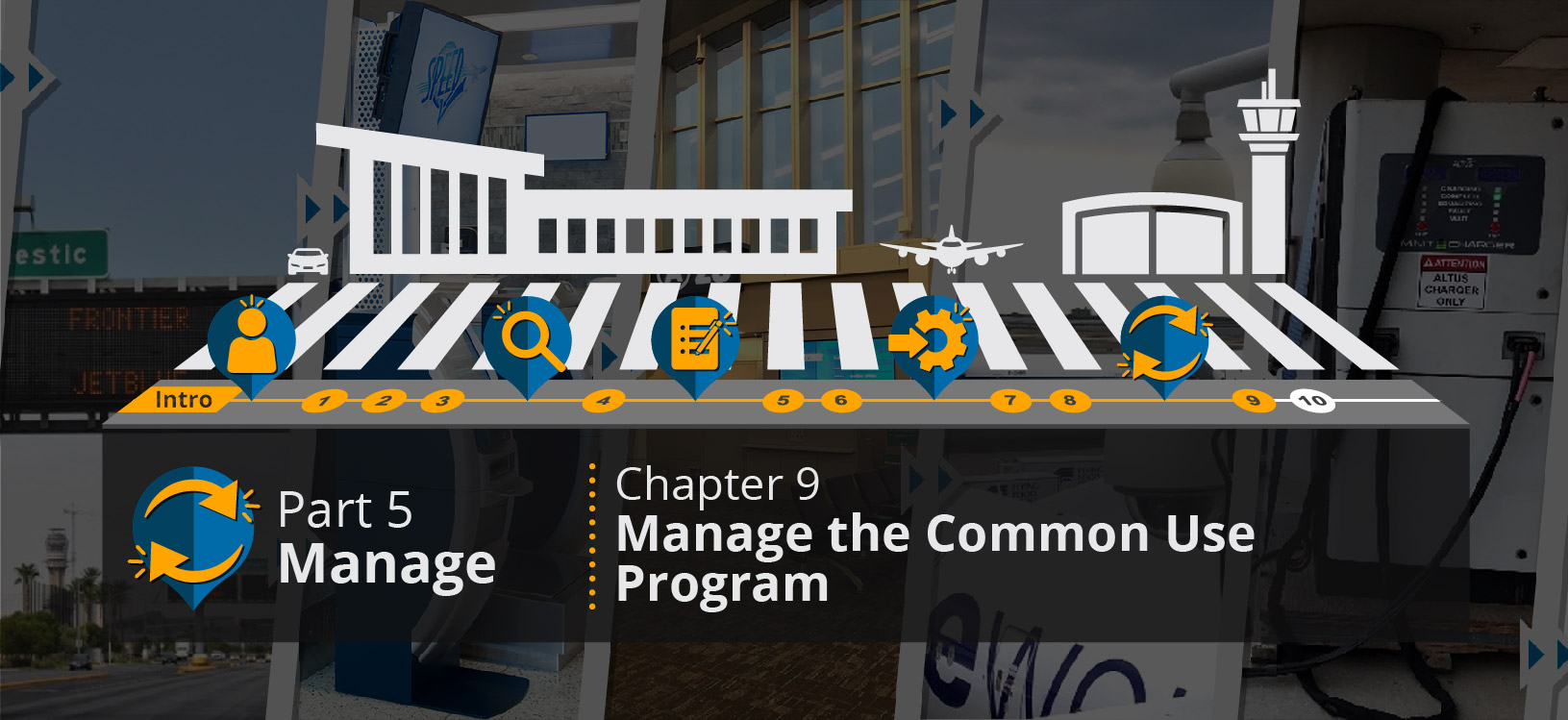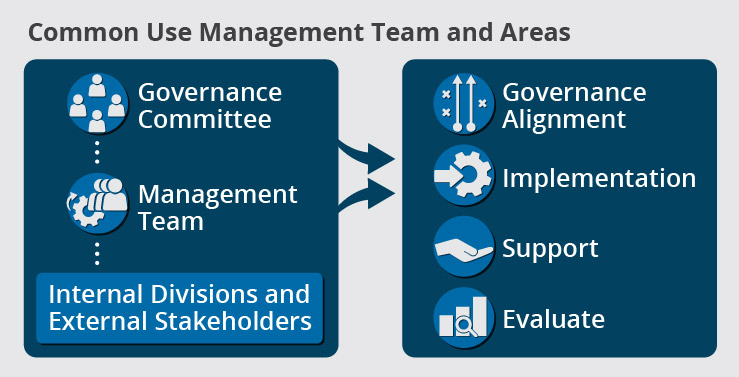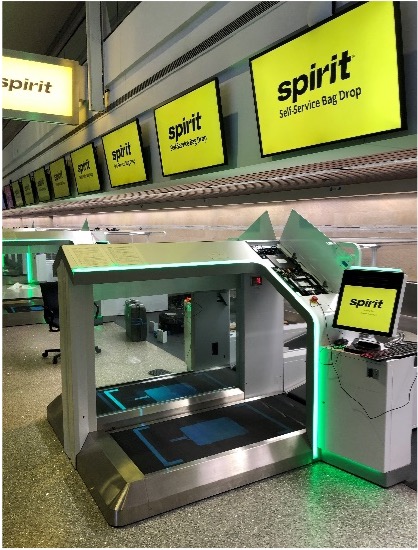
Chapter 9: Manage the Common Use Program
The following sections describe the management team and areas. See the Deep Dive sections of this chapter for the complete details on each piece.
Management Team
Management of the common use program requires a series of interrelated processes that ensure that the common use program remains in alignment with its governance objectives. It is also best to formally identify a team that is responsible for these areas. A common use management team is needed to create the functional alignment between the various internal stakeholder divisions and the common use governance committee, as shown in Figure 9.1. This figure also presents the key areas of common use management, as presented in the next Deep Dive page.

Figure 9.1: Management Team and Areas
As an example of a common use management team, one airport regularly maintains a group that comes together to discuss common use space allocation. At another airport, the team includes representation from two airlines, which make up 85% of the flight activity, and has an ongoing focus on ensuring that their needs are being met.
Ideally, each division within the airport would provide representation as part of a collective management team that maintains responsibilities for that division's inputs to the common use program. These responsibilities include the following examples:
Executive
The Executive leaders need to ensure the airport vision and objectives are communicated and integrated into the common use program and provide visible support to encourage broad participation airport-wide.
| Stakeholder Group | Role in Common Use Management |
| Operations / Facilities / Maintenance / Planning | This group collectively works to address the physical and operational aspects of a common use program. |
| Business / Properties / Air Service Development | This group addresses the business aspects of a common use program. They address the financial impacts, legal, safety, risk implications, and leasing strategies. |
| Public Affairs / Customer Service / Passenger Experience | These divisions of the airport address the entirety of the common use program from the passenger experience perspective. They work to incorporate the passenger and stakeholder experiences and expected level of service to provide a seamless passenger journey. |
| Technology / Innovation | The technology group is often considered the “owner” of common use because most airports think of common use as a technology system. However, in a holistic common use program, the technology and innovations groups act as a partner to ALL of the airport divisions in providing the needed systems and support to facilitate the common use of the facility. |
Consider these example responsibilities as a general breakdown to apply against the unique dynamics in your airport organizational matrix.
Management Areas
The ongoing management of common use encompasses the overall areas of governance alignment, implementation, support, and evaluate, as shown in Figure 9.2.

Figure 9.2: Management Team and Areas
There are several pieces within each of these areas, which are described in the following sections. Consider this a sort of checklist as you build or improve your unique common use management approach. Further, as noted for Chapter 5, this section is the result of applying the research findings for this project against airport expertise and industry best practices in management as found in COBIT 5, an ISACA Framework. For more detailed guidance on the principles and practices of governance and management, see ISACA COBIT 5, © 2012 ISACA. All rights reserved. Used with permission.
See below for an outline of what the Deep Dive for this section provides.

Governance Alignment
- Portfolio
- Budget and Costs
- Human Resources
- Relationships
- Service Agreements
- Suppliers
- Quality
- Risk
- Security

Implementation
- Programs and Projects
- Requirements Definition
- Solutions Identification and Build
- Availability and Capacity
- Changes
- Change Acceptance and Transitioning
- Knowledge
- Assets
- Configuration

Support
- Operations
- Service Requests and Incidents
- Problems
- Continuity
- Security Services
- Business Process Controls

Evaluate
- Performance and Conformance
- System of Internal Control
- Compliance with External Requirements




